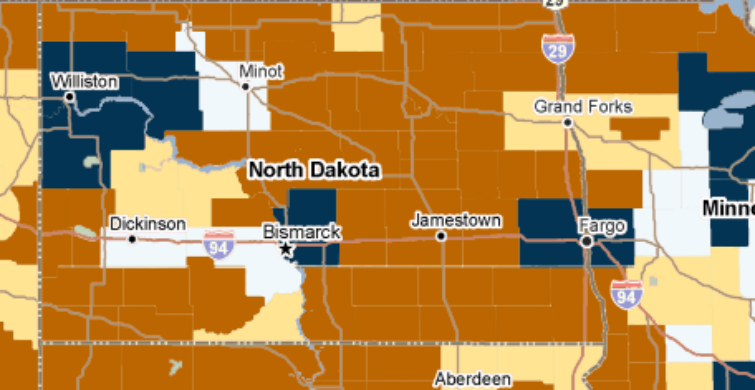The Energy Boom of North Dakota

While Washington bemoans its own inaction toward addressing the impending “fiscal cliff,” Americans across the country are stuck wondering what lies ahead for the coming year. Yet, as many families plan for the worst, fearing the threat of a renewed economic slump, the energy economy in the Northern Great Plains of North Dakota is thriving. Centered on the remote town of Williston in the northwest corner of the state, an energy boom is fueling a migration of newcomers looking for work. As a result of increasing energy prices, and the introduction of new extraction technologies (primarily horizontal drilling, and hydraulic fracturing a.k.a. “fracking”), the region has seen an increase in population and income. With a population of 14,716 in 2010, Williston grew by 17% during the previous decade. This growth can be easily explained by the average industry wage of $90,956 (oil and gas extraction). Average wages across all industries for Williams County increased from $22,379 in 2000 to $72,617 in 2011.
The New York Times ran an article this week highlighting the many young workers who are opting to cash in on this modern gold rush, rather than attending some type of post-secondary education. With the allure of a $50,000+ starting salary fresh out of high school, it is not hard to imagine why 18 and 19-year-olds across the region are choosing a high paying job and a shiny new truck over classes and books, and a lifetime of debt. While unemployment and massive student debt continue to weigh down the country’s youth generation, it is likely that a trend of delaying college for work in the oil industry could increase. As gas prices continue to rise and more oil/gas reserves are being tapped for new production (e.g. Marcellus Shale across Pennsylvania and New York), it can be expected that energy production will play a key part in the economic stability of those regions. But we must ask, at what cost? How long will these jobs last? Could a job in the oil fields finance a debt-free college education? What are the long-term environmental impacts of unregulated production? How can these small towns and local residents best manage the fast pace of growth, efficiently and equitably?
Using PolicyMap we can analyze some of our data to show this modern “boomtown” growth on a map. The first map below displays population change from the 2010 Census by county, showing massive depopulation across the Great Plains. However, when we zoom into the Williston region, along the border of North Dakota and Montana, our analytic pulls out those counties where the percent change of youth population (18-34) has increased by greater than 15% and average annual wage by state in the oil and gas extraction industry exceeds $70,000. These areas stand out as growing in population, while surrounded by communities that are largely emptying out. Whereas young people across the region might have otherwise headed for a college town or big city after high school, this growth is largely due to migration of young workers, which in some areas saw an increase as high as 75%. The wage statistics come from the Bureau of Labor Statistics Quarterly Census of Employment and Wages (QCEW), which lists the number of jobs and average wages by industry, and can be found under the “Jobs & Economy” tab.
 (Click for larger image)
(Click for larger image)